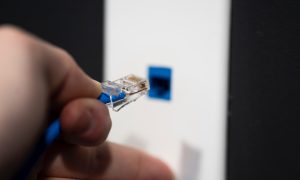When attempting to use the Telnet command in the Windows Command Prompt, users might occasionally encounter the error message: “‘telnet’ is not recognized as an internal or external command, operable program or batch file.” This can be frustrating, especially for IT professionals and networking students who often rely on Telnet for testing connectivity and accessing remote machines. Fortunately, the Telnet client is still available on modern versions of Windows — it just isn’t installed by default.
This article provides a step-by-step guide to fixing the Telnet recognition error in Command Prompt by enabling the Telnet Client feature in Windows. Once you’ve completed the steps outlined below, the Telnet command should function as expected.
Why the Error Occurs
The primary reason for the error is that the Telnet Client is not installed on the system. Microsoft made Telnet an optional feature to minimize security risks associated with its usage. As a result, if Telnet hasn’t been manually installed, commands issued from the Command Prompt will trigger the “not recognized” error.
How to Fix the Error
There are multiple ways to fix the “Telnet not recognized” error. Below are the most effective methods:
1. Enable Telnet via Control Panel
Step-by-step instructions:
- Open the Control Panel.
- Navigate to Programs > Programs and Features.
- Click on Turn Windows features on or off on the left sidebar.
- In the list that appears, check the box next to Telnet Client.
- Click OK and wait for the installation to complete.
[ai-img]control panel, turn windows features on or off, telnet checkbox[/ai-img]
2. Enable Telnet Using Command Prompt (Admin)
If you prefer using commands, you can enable Telnet through the Command Prompt with administrative privileges.
Steps:
- Right-click the Start Menu and select Command Prompt (Admin) or Windows Terminal (Admin).
- Type the following command and press Enter:
DISM /Online /Enable-Feature /FeatureName:TelnetClient
This command utilizes the Deployment Image Servicing and Management (DISM) tool to activate the Telnet feature.
3. Confirm Telnet Installation
After enabling the client, you can verify the installation:
- Open a new Command Prompt window.
- Type telnet and press Enter.
The prompt should change, indicating you’ve entered Telnet mode. If it does, that confirms Telnet is now active.
[ai-img]command prompt, telnet verification, telnet welcome screen[/ai-img]
Alternative: Use a Third-Party Terminal
If you prefer a more secure or feature-rich alternative, consider using tools like PuTTY or KiTTY. These third-party tools provide similar functionality to Telnet and are popular among network administrators.
Security Considerations
Telnet transmits data in plain text, including any login credentials. This makes it susceptible to eavesdropping attacks. If you’re working in a production environment, it’s better to use more secure protocols like SSH (Secure Shell) instead of Telnet for remote communications.
Conclusion
Fixing the “Telnet is not recognized” error in Windows Command Prompt is straightforward once you understand that the Telnet client is merely disabled by default. By enabling it either through the Control Panel or using the DISM command, users can restore Telnet functionality within minutes.
FAQ
- Q: Is Telnet installed by default in Windows 10 or Windows 11?
A: No, Telnet is available but not installed by default. You must enable it manually. - Q: Can I uninstall Telnet later?
A: Yes. You can simply go back to the “Windows Features” menu and uncheck Telnet Client to remove it. - Q: Is Telnet safe to use?
A: Telnet is not secure because it transfers data without encryption. It’s recommended to use SSH for sensitive or remote access tasks. - Q: What are some Telnet alternatives?
A: You can use PuTTY, KiTTY, or built-in PowerShell commands for similar purposes. SSH is a more secure alternative. - Q: I enabled Telnet, but still get the error. What should I do?
A: Make sure to close and reopen Command Prompt after installation. If the issue persists, restart your computer.














